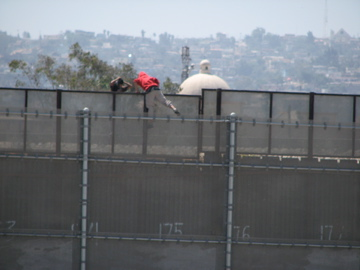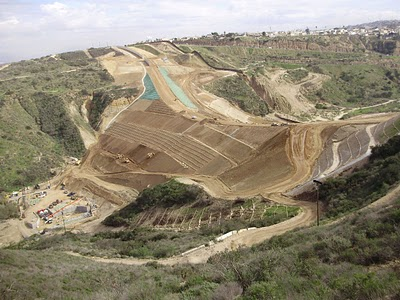Introduction
Famously known as the Border of Defense in the United States or the Border Wall, the great wall elevated between the United States and Mexico was initiated by the Department of Homeland Security (DHS) in 2005 by the United States Government under the leadership of Bill Clinton (David 25). It was rather was carried on by George Bush who renamed it as a ‘virtual fence’ by introducing digital surveillance cameras, ground sensors, and radars to curb illegal immigrants and illegal drugs from Latin America. Its name was changed to Secure Border Initiative Network ( SBInet) by the homeland security Bureaucrats (Fairus.org 1). This SBInet project is expected to be through by 2014. As of January this year, 644 miles of fencing have been finished this includes 345 miles of primary pedestrian fence and 299 miles of vehicle fence (Fairus.org 1).
The delays as unacceptable
The border wall project has been delayed by technical failures which have raised eyebrows, especially in the top Government officials. There has been a call from the secretary of the Department of Homeland Security to reassess the project terming the delays as unacceptable and advises the Government to look for efficient and economical options (Fairus.org 2). The technology which was supposed to be completed in June 2007 to enable security men to monitor activities at the border failed due to software problems. As one problem was solved, another acute one arose including confusion of vegetation as animals by radar systems while cameras becoming too slow in adverse climates. This January, the project received another technical blow as the first finished security patch which was to be tested by the border patrol failed due to video recording malfunctioning (Fairus.org 4).
The cost of the border
The border wall was a mega project estimated to consume $6.7 billion of taxpayer’s money and was contracted to Boeing Company. Due to the present lack of feasibility in the project, President Barrack Obama has proposed about a $225million cut in funding of security border. In a span of three years, billions have been spent but the project is on its first 28 miles remaining 1,972 miles to completion (Fairus.Org 1). It is estimated that the virtual fence will be completed earliest by 2016. Overhead costs rose sharply due to the type of the fence, materials used, labor costs, topography among other costs. It has been approximated that the violation of the pedestrian fence has occurred more than 3000 times with each repair costing approximately $1,400. DHS estimates that the cost of maintaining the fence in 20 years to be about $7 billion.
Illegal entrance
Bulgaria and Romania tried to control the movement of people across their borders by using searchlights, machine guns, watchtowers, and many more facilities. Still, people sneaked in either by sheer luck or by much dedication. This puts at risk the lives of those seeking to enter the United States illegally as shown below (No Border Wall 1).

A negative impact on environment
Others argue that the border wall hurt the environment especially in hampering the free movements of animals especially the endangered species like the jaguar, sonorant pronghorn, ocelot, and many others who cross the border in search of water and pasture, especially during dry spells. The effort to increase the population of jaguars which are among the endangered species in the U.S has been hampered by the construction of the border since their population span from the US to Mexico, in turn making it impossible for their access to healthy breeding grounds (No Border Wall 5).
Another major concern was the River National Estuarine Research Reserve, the largest remaining salt marshes in California which provide an ecological niche for many endangered animal species and plants. This border wall was challenged in court by the Sierra Club and other environmental groups causing a halt in construction as it confined the animals in one place hence competence of the scarce resources causing a decline in their population.
It was noted that the Department of Homeland Security (DHS) used 2 million cubic yards of the earth which they excavated from nearby mountain tops to fill the canyon is also known as smuggler’s gulch. This has caused a lot of soil erosion on the mountains tops and the nearby rivers resulting in increased siltation and flow of dirty waters down the stream especially during the rainy season (No Border Wall 7).

Early this year, Harry Leid, the Senate Majority Leader, made public the “Hiring Incentives to Restore Employment Act” (Fairus.Org 2). This bill seeks to exempt employers who hire and retain employees regardless of their immigration status from tax.
Conclusion
Even if there has been a reported sharp decrease of illegal immigrants in the recent past, many don’t look at it as the success of the virtual border but rather look at it as a result of the economic meltdown that was caused by the recession which triggered scarcity of jobs. Studies have shown that the wall works in reverse. Instead of preventing people from coming in, it prevents illegal immigrants from getting out which is the desire of most illegal immigrants once they attain financial stability (David 55).
References
Alex, Webb, and Tom, Miller.
Crossings. New York, NY: Monacelli. 2003.
“Border walls are the ineffective speed bumps in the desert”. No Border Wall. 2010. Web.
David, A. H. Divided Soul. Glasgow. Phaidon Press. 2003
Fairus.org. “U.S. Legislative Immigration” Right Side News. 2010. Web.